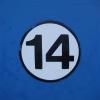I have a confession ......
The more I look at the original 1966 design, the more I like it and that is almost certainly the way I will go. However, it is heartening to know that, from your various posts and PMs, I am not in the minority!
There is also another reason I want to keep as close to the 1966 car as possible. In this form, there is a vague possibility my finished car could be allowed to race against the cars it was originally meant to compete against in the late 1960s - Ford's GT40, Ferrari's 330 P4, Chaparral 2F etc. Even if this ends up being unattainable, at this early stage I don't want to be building in barriers that could possibly compromise the dream!
I have already commissioned a consultant who is helping me translate all the notes/drawings/data/photos/actual dimensions etc I have on the 1966 and current car, into a digital CAD/CAM representation that can be used to actually manufacture buck/formers/monocoque. The beauty of this digital approach is that completely faithful physical scale models can be produced to compare with the current car and period photos before anything is committed to metal. It is also possible to "virtually" trial-fit things such as suspension components, pipework, seats, engine, gearbox etc and to calculate final centres-of-gravity, suspension angles, corner weights, drag coefficients etc. Another advantage is that a by-product of the process is an accurate buck etc that can be used in the event of future damage to the car or any of its major components.
It is also possible to accurately scan unobtainable components such as engine components including the original twin-cam cylinder heads (the heads on my original engine are the ultimate development of the twin cam design in the 1960s and are in advance of the heads that ended up on the current car in the JDHT collection). The digitisation technique involves surface laser scanning and internal scanning by means of inserted probes.
I will maintain a log of progress on my personal blog at
XJ13 - Building the Legend



















